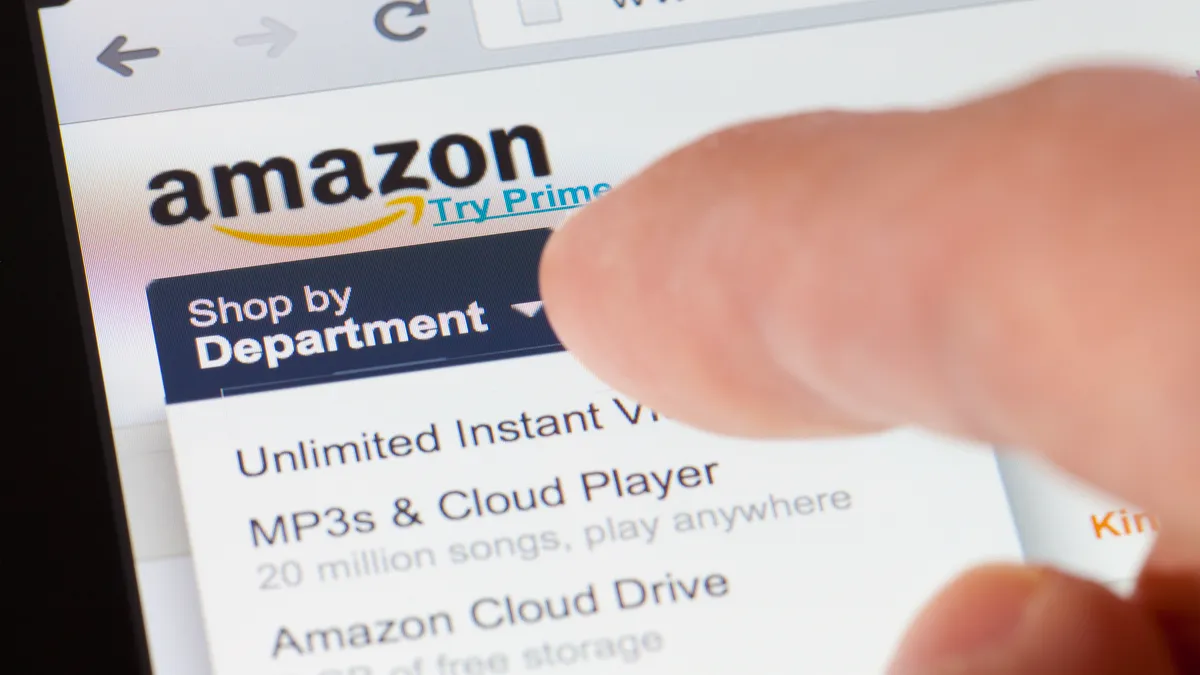Dive Brief:
-
Amazon, battling a rising number of counterfeit sales on its Marketplace, is developing digital tools designed to help smaller sellers and manufacturers protect their wares from copycats that drag down their reputation and sales, CNET reports.
-
CNET describes the program as a “suite of digital tools” called Brand Central. There are few specifics about what those tools are, and Amazon declined to confirm the existence of the project.
-
The Brand Central effort comes as Amazon also has stepped up its requirements of sellers of major brands like Nike, including providing wholesale invoices and other proof of merchandise provenance and “brand gating” fees as high as $1,500.
Dive Insight:
Counterfeiting is a $1.7 trillion global criminal enterprise that is difficult to track and that goes widely unpunished, and it's especially a problem within e-commerce, according to watchdog group The Counterfeit Report. Digital marketplaces Alibaba and eBay and even artisanal site Etsy are struggling with sales of fakes on their platforms, and with half of all goods sold now moving coming from its third-party sellers, Amazon is also increasingly a source for fakes from major brands and small sellers alike.
While it’s become clear that Amazon is not immune to the problem of counterfeit sales on its Marketplace, it’s far less clear whether the e-commerce giant can get a handle on the problem. Amazon in recent months has taken significant steps to curb illegitimate sales: Early this month the company filed its first lawsuits against marketplaces sellers charged with selling counterfeit goods. Amazon is also cooperating in another lawsuit from Apple against one of its sellers in addition to the brand gating program and the Brand Central tools.
But the company has already lost the trust of many sellers, including smaller ones interviewed by CNET, and this summer footwear brand Birkenstock USA pulled all its products from the site and its Marketplace, warning customers that any shoes purported to be theirs were likely to be fake.
Losing the trust of sellers, of course, puts Amazon on the path to losing the trust of customers.
“Customers trust that they can always buy with confidence on Amazon.com,” the company says on the page touting its Anti-Counterfeiting Policy. “Products offered for sale on Amazon.com must be authentic. The sale of counterfeit products, including any products that have been illegally replicated, reproduced, or manufactured, is strictly prohibited.”
Red Points, a brand and copyright protection firm tracking the problem, says that “genuine producers are still losing out to cheap imitations” on Amazon and other e-commerce sites. One problem is that it’s all too easy for sellers to use photos of authentic items on a page actually selling fakes. In order to keep up with counterfeiters’ fast-moving operations, marketplaces will need a technical solution, according to Red Points CEO Laura Urquizu.
“This move to sue and punish counterfeit sellers on Amazon, is a welcome development in the fight against counterfeits,” Urquizu said in an email to Retail Dive. “The problem is growing and there are a number of causal factors — some economic, some socially driven. These products are placed right next to the genuine at a seemingly discounted rate, giving them a huge advantage. We believe strongly that fighting counterfeits requires smart tech based solutions. Traditional methods are too rigid and slow for a dynamic digital market — a technological solution allows companies to detect and remove counterfeits just as quick as sellers can list them.”















